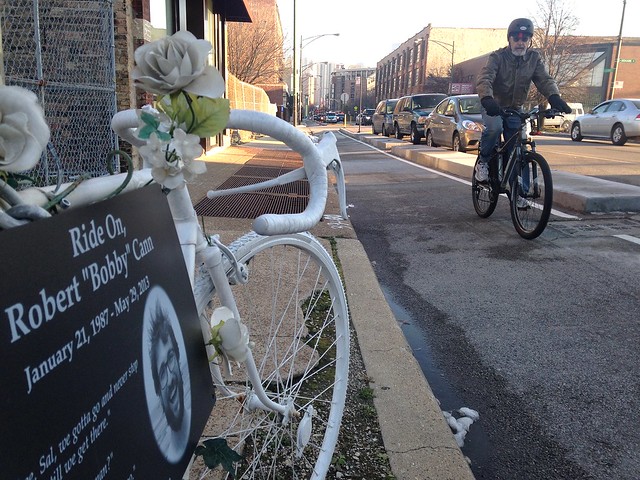
[The Chicago Reader recently launched a new weekly transportation column written by Streetsblog Chicago editor John Greenfield. This partnership will allow Streetsblog to extend the reach of our livable streets advocacy. We’ll be syndicating a portion of the column on the day it comes out online; you can read the remainder on the Reader’s website or in print. The paper hits the streets on Thursdays.]
On the evening of May 29, 2013, 26-year-old Bobby Cann was bicycling north on Larrabee from his job at Groupon, heading home to catch a Blackhawks game. Meanwhile, 28-year-old Ryne San Hamel was driving southeast on Clybourn. He'd been drinking in Wrigleyville after watching the Cubs defeat the Sox.
Just after 6:30 PM, the two men's paths tragically collided. Police said San Hamel had been driving his Mercedes at least 50 mph when he struck Cann at the Larrabee intersection. The cyclist suffered horrific injuries and, despite the best efforts of bystanders and paramedics, he was dead within the hour.
San Hamel was found to have had a blood-alcohol content of 0.15, nearly twice the legal limit. He's being prosecuted for aggravated DUI, but the case hasn't yet gone to trial.
Near the crash site, there's a shrine with flowers, photographs, and a white-painted "ghost bike" that bears a placard with Cann's image. On November 20 of this year, officials from the city and state transportation department cut the ribbon on curb-protected bike lanes on this stretch of Clybourn, plus a segment of Division.
These bike lanes, which are separated from traffic by wide concrete curbs that provide extra protection for riders, double as a memorial for the fallen cyclist. Friends and coworkers said Cann was always encouraging others to bike, and to do it safely.
Clybourn is only the second road in town to get this type of bikeway. Most Chicago protected lanes are located curbside and are separated from traffic by a striped buffer zone, flexible plastic posts, and parked cars.
The Clybourn lanes are also noteworthy because they're the first protected lanes built on a state route within the city. That's because in 2011, soon after the Chicago Department of Transportation opened the city's first protected lanes on Kinzie, the state government began quietly blocking the city from installing protected lanes on state roads.
Forty percent of Chicago's arterial streets are under Illinois Department of Transportation jurisdiction. These wide roadways generally have high crash rates, but CDOT is required to get approval from the state before making safety improvements to them.
The former heads of CDOT and IDOT, plus the director of the Active Transportation Alliance, now indicate that the chief architect of the three-year ban was ex-governor Pat Quinn's deputy chief of staff Sean O'Shea.
The state claimed the reason for the prohibition was a need for more proof that protected lanes are safe. But former city transportation commissioner Gabe Klein says the ban was motivated by "political and personality issues." (For full disclosure, Klein is currently a board member with the parent organization for Streetsblog Chicago, which I edit.)
It's not certain what would have happened if the moratorium hadn't been in place, or had been lifted earlier. But data suggests that Cann's death, as well as other crashes, might have been prevented if protected lanes had been installed sooner on Clybourn and other state routes.
Here's a timeline of how the ban occurred, and was ultimately overturned with the start of the Clybourn project, three years later.





